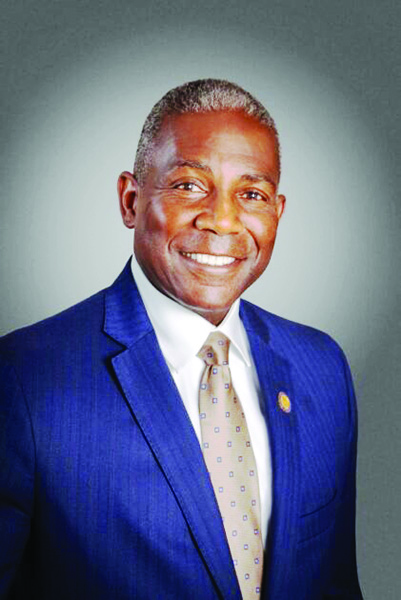Education
OP-ED: “Learn, Lead, & Lift: HBCUs Will Continue to Thrive Amid Diversity Debate”
Amid the diversity debate, HBCUs play a crucial role in higher education, but challenges in enrollment and funding persist. Both HBCUs and PWIs must ensure diversity and equal access.

By LTG Darrell K. Williams
(Retired, USA)
President, Hampton University
After several weeks of national debate, there is broader understanding of the Supreme Court’s ruling on affirmative action and the redefined legal framework that governs diversity initiatives in higher education. The decision reaffirms the importance diversity plays in fostering inclusive learning environments. Admissions policies must strike a balance between meritocracy and equal access, ensuring that all students – regardless of their backgrounds and circumstances – have an equitable opportunity to pursue higher education. This aspect of the decision is not in question.
However, much of the unease with the decision is that it presupposes a colorblind society and that all its citizens have equal access to an education at all levels of the American education system. Unfortunately, this simply is not the case. The ruling potentially sows the seeds for a more segregated higher education system and one in which fewer Black Americans will receive a college education. Further, and equally troubling, is the possible decline in Black student enrollment at Predominantly White Institutions (PWI). The ruling potentially rolls back decades of progress towards diversity within our higher education system, with potentially far-reaching impacts on HBCUs, as well as PWIs.
The potential decline in Black student enrollment at PWIs is borne out by the results of California’s 1996 California State System ban on affirmative action enrollment initiatives.
“As of 2020, Black student enrollment in California State University (CSU) and University of California (UC) remains lower than their share of high school graduates in California. The gap is greater at CSU where they were 8 percent of the freshman class in 1997 but have fallen almost in half to 4 percent. At the same time, the number of Black high school graduates has increased from about 21,000 in 1997 to 25,000 in 2018.” There is great potential for this same dynamic to occur on a national scale, leaving an unacceptable swath of Black students in danger of experiencing more restricted access to higher education.
Among possible positive impacts is increased enrollment at HBCUs. Yet, challenges to both capacity and funding persist. According to the United Negro College Fund (UNCF) and Goldman Sachs Research, “Although HBCUs make up only 3 percent of the country’s colleges and universities, they enroll 10 percent of all African-American students and produce almost 13 percent of all African-American graduates,” meaning the overwhelming majority of Black students graduate from PWIs. It is unlikely that HBCUs can absorb the scores of Black students possibly turned away from PWIs, if indeed California is a test case.
HBCUs will also require additional funding. The same Goldman Sachs report concluded that “Public HBCUs reported 54 percent less in assets per student than public non-HBCUs in 2021, highlighting an ongoing disparity in endowment sizes. Private HBCUs had 79 percent less in assets per student compared to private non-HBCUs. Failure to proactively address this sizeable gap will render many HBCUs unable to respond to the increased demand for enrollment. Impacted HBCUs will need additional funding for more faculty, staff, and administrators, and enhancements to residential and academic infrastructure.
Within this national discussion, we must reject the temptation of a false either-or narrative. We need both better support to HBCUs and maintenance of a process that ensures Black students are admitted into PWIs at levels near or greater than before the Supreme Court decision.
America must continue to insist upon diversity as an inseparable part of the comprehensive learning experience. College is where networking begins and where many of the relationships vital to our democracy are built. It’s where students from varying backgrounds are introduced to broader social and political perspectives, which form the foundation of civil discourse.
College is more than an academic endeavor. At Hampton University, we call it providing an “Education for Life.” There are roughly 4,000 Title IV degree-granting institutions in America, and just over 100 are HBCUs. America needs both strong HBCUs and large numbers of Black students graduating from PWIs.
To some, diversity within the concept of an HBCU is an oxymoron. History tells us that HBCUs are the blueprint for serving students, faculty, and staff from a spectrum of colors, creeds, and classes. From 1878 to 1923, Hampton opened its doors to over 1,300 Indigenous peoples from over 65 different tribes, marking one of our institution’s first major expressions of diversity and inclusion.
With over 40,000 recorded alumni across America and around the world, Hampton has long celebrated the contributions of students from diverse racial and ethnic backgrounds, cultivating an environment that nurtures individual growth, cultural exchange, and intellectual rigor. With much of the teeth of affirmative programs shelved as a national imperative, responsibility now rests with individual institutions to ensure that diversity persists.
We cannot wait five years to discover that possible unintended impacts of the ruling on higher education have become irreversible realities.
As higher education continues to evolve, HBCUs must remain an important pathway to equality. At the heart of any HBCU experience is the celebration of cultural identity, a “lift-as-we-climb” spirit, an ethos of service, and a commitment to excellence. However, HBCUs are only part of the overall landscape of a brilliant higher education system. There must remain equal access to an education at all of America’s colleges and universities.
As for us, Hampton University hereby reaffirms its commitment to remaining part of our nation’s higher education solution. Excellence is here. It has been since 1868, and will always be.